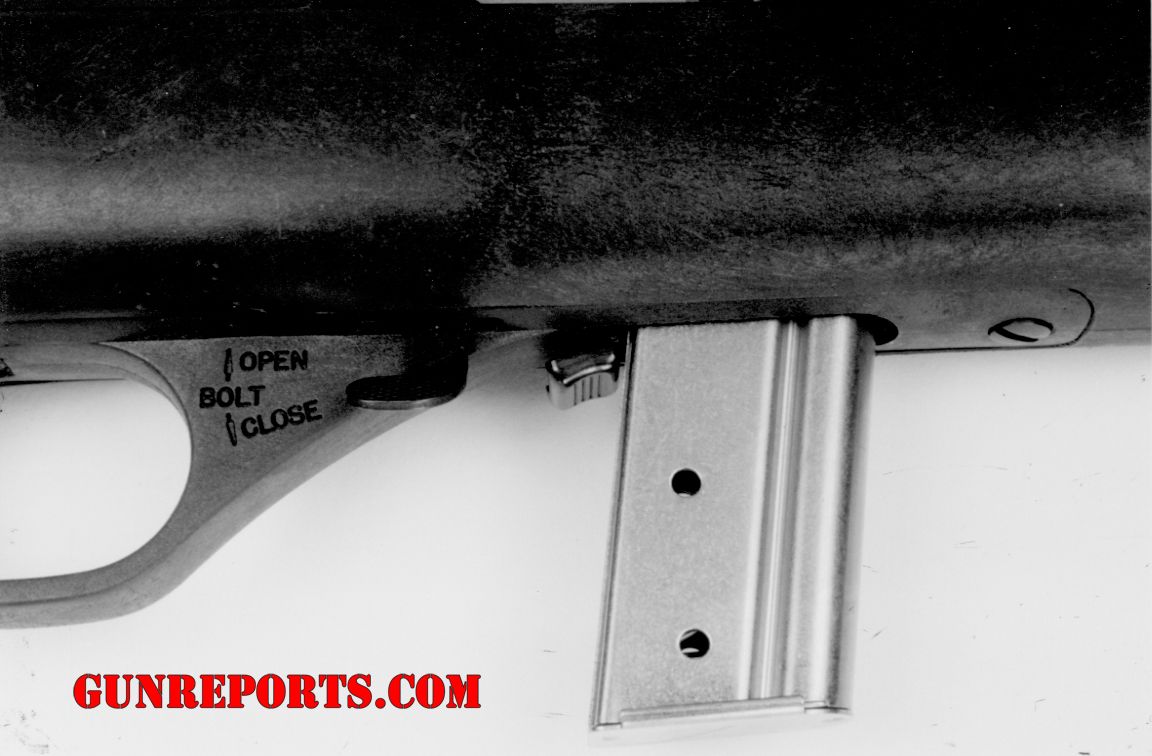Autoloading .22’s are lots of fun and can be lots of gun. They tend to run you broke on ammunition because of the lure of easily and quickly firing off the entire magazine. In fact, this might be one reason to own a semiauto .22 that has a limited number of rounds in the magazine, say five to seven rounds. This limitation tends to force the shooter to make every shot count.
Courtesy

We wrung out a heavy-barrel semiautomatic .22 LR rifle to show you what it has to offer. For this evaluation, we tried the Marlin 7000.
The Marlin 7000 was a somewhat odd-looking rifle because of its relatively short barrel, coupled with a stock that had a relatively long pull length of 14 inches. Its detachable box magazine held ten rounds. The stock was made of a black fiberglass-filled synthetic, with a smooth finish and molded-in checkering. The plastic trigger guard was removable. The stock featured a black rubber recoil pad, plastic pistol grip cap and blued steel swivel studs. All were well installed.
The receiver was made of an aluminum alloy, matte-black finished. The 18-inch barrel measured 0.81 inch in diameter at the muzzle and had a brushed blue finish. The stock had an elevated comb and a Schnabel-style forend that we thought looked good, but was a bit too slim. (Europeans ought to love it.) The rifle features a FAL-like bolt control lever that we’ll describe a bit later. There was a two-piece Weaver-style scope base included with the rifle. There were no metallic sights on this rifle. At 5-1/4 pounds, it was the lightest rifle of this test.
We thought the Marlin 7000 was average in its stock-to-metal and metal-to-metal fitting. The barrel was not free-floated, and there was a medium-size gap at the rear of the receiver and a small gap around the rear of the trigger guard. There was some play in the magazine when it was locked in place, and there was a moderate to small amount of play in the majority of the moving parts.
Marlin equipped the Model 7000 with a 5-1/4-pound trigger. Its pull had minor slack, a clean release and little overtravel. The trigger itself had a grooved 1/4-inch-wide face. The bolt was the smoothest operating of the test, and also had the largest cocking handle. (Remember those gloves in cold weather?)
One of the neatest features was the bolt release/lock lever, located on the right forward portion of the trigger guard. Pulling back the bolt and pushing up on the lever locked the bolt open. After reloading the magazine and putting it back into the gun, pressing down on the lever released the bolt to fly forward and chamber a round—a very similar method (though on the opposite side) to that of the great FN FAL centerfire battle rifle. The bolt automatically locked open after the last shot, unique among the three test rifles, and a really professional touch. The bolt release/locking lever worked well and smoothly.
Gun Tests

The Marlin’s manual safety was a crossbolt located at the rear of the trigger guard. When pushed to the right, it engaged and prevented firing by blocking the trigger. It disengaged when pushed to the left. The crossbolt worked smoothly. Another safety-related feature was a magazine disconnect device, which made it impossible to fire the gun with the magazine removed. Getting the magazine out of the Marlin required pressing rearward on a spring-steel catch located at the rear of the magazine well. It worked well.
The light Marlin 7000 was very fast in shouldering and target acquisition. Most of our shooters liked its slightly longer pull length. They also thought the rifle had enough muzzle heft for adequate offhand stability, in spite of its light weight. The recoil pad was comfortable, but just about all shooters wanted a less-pointed toe. (This can be accomplished by the individual with a moderately coarse file followed by sandpaper.) We thought the raised comb permitted good cheek and jaw contact for comfortable and easy shooting. Although the forend was slim, it ought to be just about right in cold weather when wearing gloves.
We must say, the locking open of the Model 7000’s bolt after the final shot was something our shooters came to know by feel; so, without even looking, they could tell when the gun was empty. This was a mighty nice feature, and we wished the other rifles in this test had it. Just about all semiauto handguns have it, and the shooter accustomed to that feedback on his autoloading handgun will appreciate it on the Marlin.
Because of its light weight, the Marlin produced noticeable muzzle jump. However, we thought recoil was completely controllable and inconsequential. There were no malfunctions of any kind during our testing of the Model 7000. Accuracy was, in our opinion, more than acceptable. We shot Federal Gold Medal Match, Winchester T22, and Remington High Velocity ammun-ition during our testing. The Marlin liked the Federal match load enough to put all its shots into an average five-shot group size of 1.55 inches at 100 yards. Not many production .22 LR rifles will consistently beat that, and usually not by much. The worst performer in the Marlin was the Remington High Velocity load, with an average group size of 2.70 inches, again at 100 yards.
We felt Marlin’s Model 7000 was a winner. It was light enough to be packable—and perhaps too light for serious competition use, but that, after all, is a pretty specialized use for a .22 rifle.






























